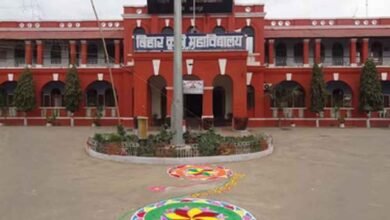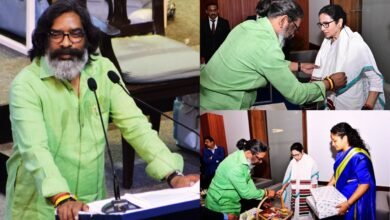Ancient Fossils Discovered in Pakur: A Glimpse into 140 Million Years of Earth History

In a groundbreaking discovery, ancient plant fossils of national importance have been found in Amdapada block of Pakur district, nestled in the hills of Rajmahal. These fossils, estimated to be between 12 to 14 million years old, are providing scientists with a rare opportunity to explore life on Earth from a time long before modern species emerged.
Birbal Sahni Institute’s Discovery
The discovery was made by a team of scientists from the Birbal Sahni Institute of Paleosciences, located in Lucknow. Dr. Suresh Kumar Pillai, along with his team, conducted a detailed survey in November 2024, focusing on villages near the Bansloi river in the Pachuwara Panchayat of Amdapada block. The team’s most significant find was an entire fossilized tree that had fallen near the riverbanks—marking the largest fossil tree discovery ever made in the region.
Along with the tree, a fossil leaf measuring over 30 centimeters was also uncovered in the coal excavation areas, which is believed to be the largest fossil leaf of its kind ever found in the state.
Uncovering the Fossils: Age and Significance
Geologists like Dr. SK Pillai revealed that the fossilized tree is from the Critesius Age, estimated to be around 120–140 million years old. This period predates the age of dinosaurs, which existed roughly 80 to 140 million years ago. The tree, believed to have been in contact with water, was preserved due to the presence of silica and mica, which formed the fossil over millions of years.
An even older 280-million-year-old leaf was also discovered, predating the dinosaur era. This Glosopteris flora, a plant species that existed during the Permian period, is believed to have been one of the key plants in the Gondwana supercontinent. The discovery of these ancient species provides crucial insights into the prehistory of the Earth and the early relations between regions such as South America, Africa, India, Australia, New Zealand, and Antarctica.
Coal Reserves and Future Discoveries
The coal reserves in Pakur’s Amdapada block are also 28 million years old, indicating that this region was active long before the age of dinosaurs. Experts predict that the discovery of fossils associated with dinosaurs may soon follow in this area, opening up new avenues for paleontological exploration.
Efforts to Preserve Fossil Heritage
In response to these significant findings, the District Forest Office (DFO), led by Saurabh Chandra, has begun working on plans to preserve the fossil site as a geological heritage site. The Forest Department is actively collaborating with the district administration to safeguard these invaluable fossils and create a Fossils Museum near the office. This museum will house fossils from across the region, allowing both researchers and the public to explore this ancient treasure trove.
A Window into Earth’s Past
This discovery not only provides insights into Earth’s distant past but also highlights the critical need for preserving these ancient records. Dr. Pillai emphasized the importance of safeguarding such fossils, noting that they offer an unparalleled opportunity to understand the evolution of life on Earth and the development of the Gondwana region.
As efforts continue to protect and study these fossils, the people of Pakur district are witnessing the unveiling of their geological heritage, bringing global attention to this significant archaeological find.



